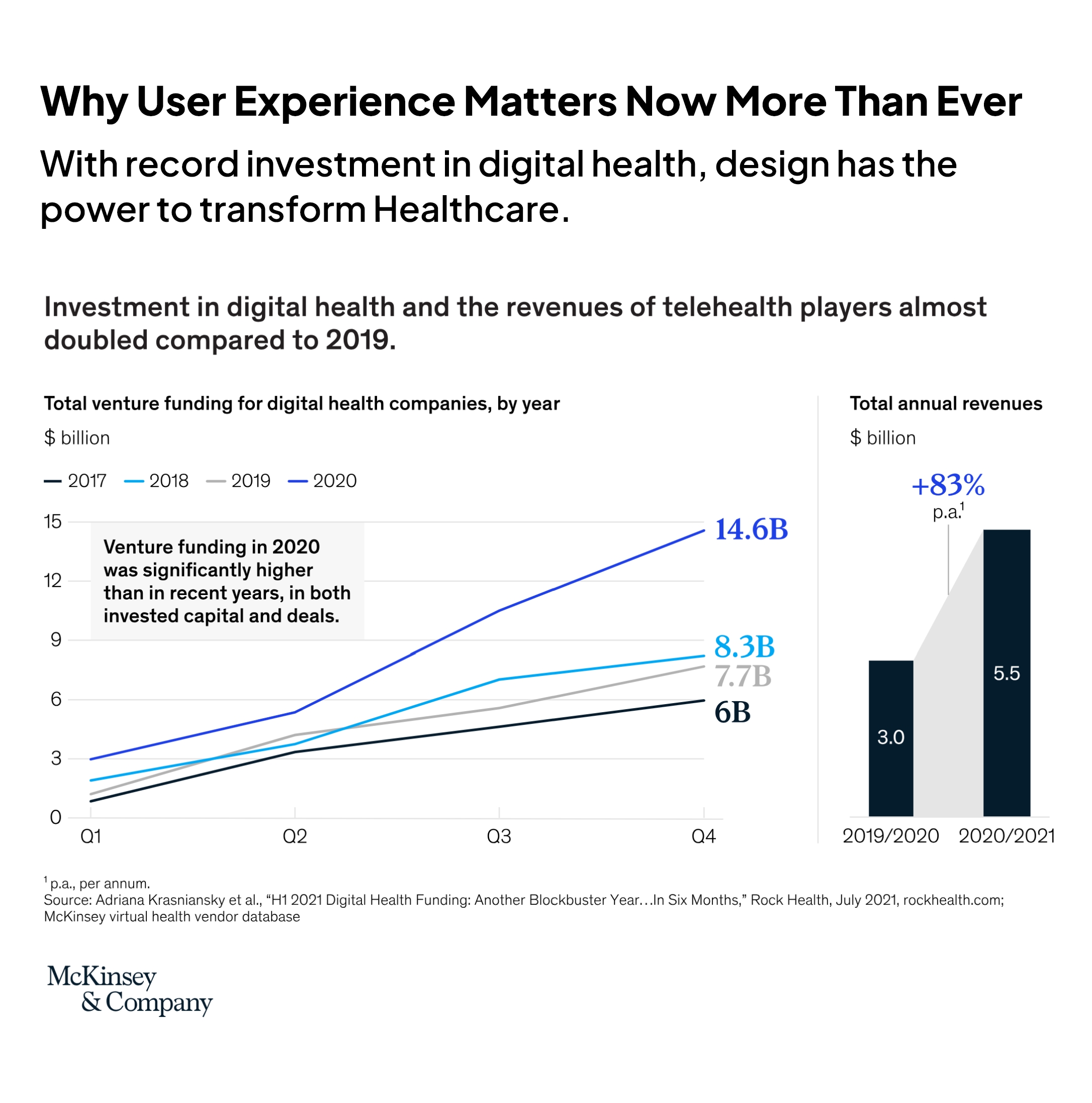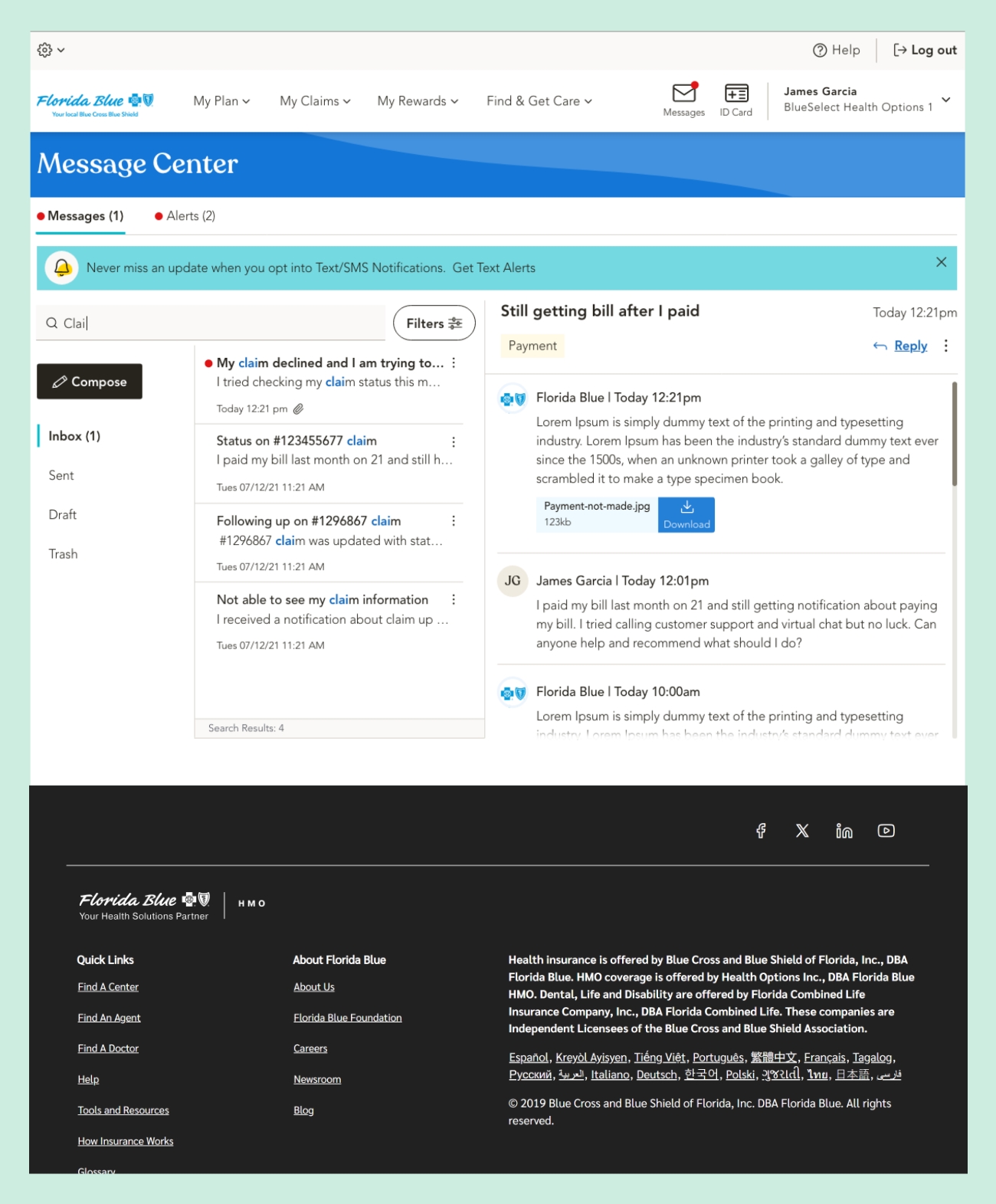Your Local UX Designer
With 14+ years in UX and product design, including 6 years focused on healthcare and Insurance, I bring a deep understanding of how design can improve outcomes and efficiency. I partner with teams to solve complex problems through evidence-based design, aligning user needs with business and compliance goals. I’m passionate about creating scalable, accessible experiences that empower users and drive measurable impact.
Design Challenges I Love Solving:
I lead end-to-end design solutions from strategy to launch.
- SaaS and Enterprise Software Design / Redesign
- Mobile Friendly Website Design/ Redesign
- Mobile Apps Design/ Redesign
- Complex Workflows and Enterprise UX Solutions
Worked With Reputable Companies:
View Testimonials




Information Source: McKinsey & Company
UX designer who’s crafted digital experiences for 10+ million users
I help healthcare organizations and large enterprise brands transform complex systems into simple, intuitive experiences across both consumer-facing and B2B interfaces. Every design decision, from research to final interface, is driven by data, empathy, and a deep understanding of user behavior.
Expertise:
- End-to-end design solutions from strategy to launch.
- Heuristic evaluation, UX research & behavior analysis
- Ideation, information architecture & journey mapping
- Accessibility & compliance-driven design (HIPAA, WCAG)
- Wireframing, prototyping & usability testing
- Content strategy & design for clarity
- Design systems & visual consistency
- Cross-functional collaboration & stakeholder alignment
- Continuous improvement through data & feedback Learn more about me
My Design Process

Discover & Define
Understand users, business goals, and challenges.
Design & Prototype
Turn insights into clear, intuitive experiences
Deliver & Support
Launch with confidence and continuously improve.

Driven by Data, Designing for People
What motivates users to keep exploring? Where do they pause, scroll, or click?
Understanding these patterns is the foundation of great UX.
Research-Driven Insights
Your users tell a story through every scroll, click, and pause. By analyzing these patterns, I uncover what drives engagement, and where friction lives. This research becomes the blueprint for clear navigation, intuitive layouts, and content that resonates.
Key areas include:
- Moderated & Unmoderated Testing
- Heatmap & session behavior analysis
- Usability heuristics & accessibility checkpoints
- Data-informed decision making
Human-Centered Design
Great UX is invisible. It simply works. Every element, from micro-interactions to messaging, is crafted to feel effortless. By blending empathy with structure, I turn complex workflows into intuitive, human-centered experiences that keep users coming back.
Key areas include:
- Interaction & interface design
- Empathy-driven experience flows
- Accessibility & inclusive design
- Iterative testing & refinement

Member Payment Portal
Check Florida Blue Website Led an end-to-end redesign, boosting FCR by 41% by early 2025
Member Message Center
Check Florida Blue Website Led an end-to-end Message redesign, boosting FCR by 46% by early 2025How UX Design Can Shape User Behaviour
- Understanding UX Design
- UX Design In Healthcare Industry
- UX Design In Insurance Industry
- Fewer user errors and support tickets
- Higher patient satisfaction and trust
- Faster staff onboarding and task completion
- Increased engagement with portals and apps
- Improved overall care quality